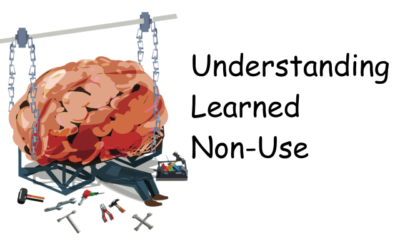Why Your Knee Buckles—and How to Regain Control
Say Goodbye to Knee Giving Way and Hello to Confident Walking
What Is Knee Buckling? 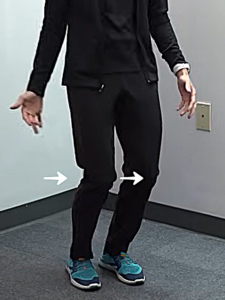
Knee buckling refers to a sudden, unexpected loss of stability in the knee joint, often described as the knee “giving way.”
It can happen while standing, walking, or going up and down stairs. This issue may stem from muscle weakness, poor coordination, or involuntary muscle patterns following a neurological injury or condition.
What Causes Knee Buckling?
1. Weakness – Often in the quadriceps (the muscles that straighten the knee) or the plantarflexors (calf muscles that point the foot down). This is common in peripheral neuropathies like diabetes.
2. Lack of Eccentric Control – Eccentric control is the ability of muscles (especially the quads) to lengthen while contracting. For example, this is needed when going down stairs.
3. Inability to Dissociate – After a stroke, the brain may struggle to make the legs perform separate movements. This may cause buckling even in the stronger leg.
4. Abnormal Synergy Patterns – Like the flexor synergy pattern, where involuntary movements cause the leg to bend unexpectedly, similar to the reflex babies use.
Flexor Withdrawal – An automatic reaction where the leg pulls away in response to a sensation on the sole of the foot.
5. Spasticity – Involuntary muscle contractions that occur due to brain or spinal cord damage. Spasticity is different from dystonia and can make coordinated movement difficult.
How Bracing Can Help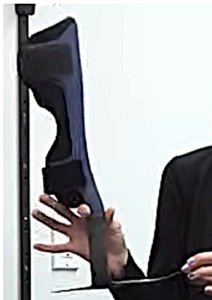
1. Floor Reaction AFO (Ankle-Foot Orthosis)
This brace helps by pushing your shin bone backward, giving your knee more support when you stand or walk.
✅ Best for:
- Knee buckling from weak quadriceps
-
Flexor synergy patterns (common after a stroke or brain injury)
🦶 Why it works:
It supports your knee by adjusting your ankle position—addressing the problem from the ground up.
2. Knee Immobilizer (Training Tool) 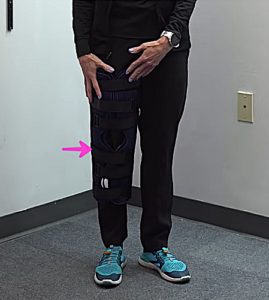
This brace keeps your knee locked straight to help retrain your leg muscles.
✅ Best used for:
-
Weakness in the quads
-
Early stages of spasticity
-
Difficulty making both legs move differently (poor dissociation)
⚠️ Important:
This is not for regular walking. It’s a short-term training tool to build better control during early rehab.
Exercises to Improve Knee Stability
I. Strengthening the Calf Muscles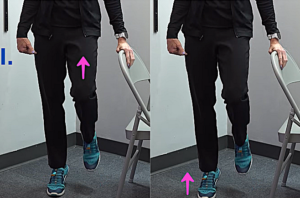
- Stand using a chair or anything stable for support.
- Do single-leg toe raises.
Modification 1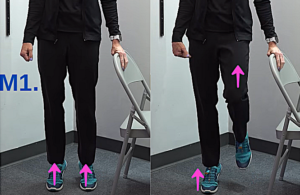
- Go up with both feet
- Lift one foot
- Lower slowly.
Modification 2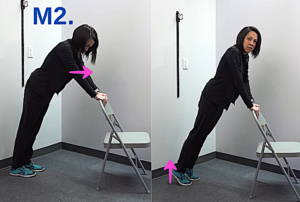
- Step back from the chair
- Lean forward
- Raise heels without bending the knees.
II. Sit to Stand (STS) for Quad Strength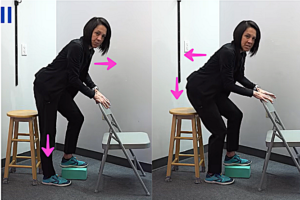
- Sit on a stool holding onto a chair for stability.
- Place your non-working leg on a yoga block.
- Shift weight to the working leg.
- Lean forward and push up (concentric).
- Lower down slowly (eccentric).
Progression: Begin on a high stool and progress to lower surfaces.
III. Step Training with PVC Frame
A. Step Up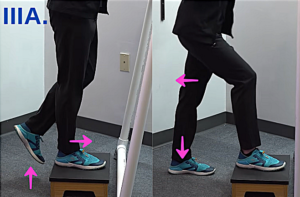
- Stand in front of a wide step or low platform.
- Step up using your stronger leg. This is the “push” part where your muscles are doing most of the work. (concentric)
- Step back down slowly and with control. (eccentric)
B. Step Down Over the PVC Frame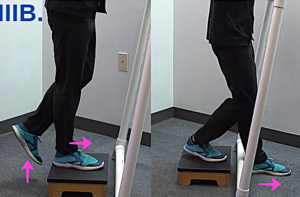
- Step up like before.
- Now, carefully step forward and down over the PVC frame. (concentric)
- This part focuses on controlled movement as your leg muscles slowly lower your body. (eccentric)
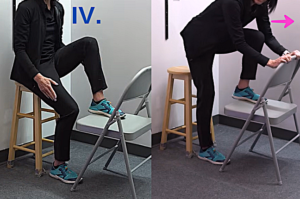 IV. Dissociation Training
IV. Dissociation Training
- Sit on a high stool with your weaker leg bent over a chair in front of you.
- Place your hands on the chair for support and balance.
- Try to perform a sit-to-stand, keeping one leg bent and the other straight the entire time.
➡️ The key is to make sure your leg positions are in the extremes—one bent, one straight—to truly work on dissociation.
Progression: Switch leg positions and repeat the exercise with the opposite setup.
Too difficult?
-
-
Start in standing with a knee immobilizer on the weaker leg.
-
Conclusion
Struggling with knee buckling can feel frustrating and even a little scary—but it doesn’t have to stay that way. When you understand why it’s happening, whether from weakness, nerve issues, or changes after a stroke, you can start building a path forward. The right combination of braces, targeted exercises, and support from your rehab team can make a real difference.
Take the first step toward steadier, more confident walking—your recovery is worth it.
Articles you may be interested in
The Pain-Avoidant Loop After Stroke: How Pain Can Stall Recovery
The Pain-Avoidant Loop After Stroke: How Pain Can Stall Recovery Pain after a stroke is real.It can be sharp, nagging, constant, or unpredictable.And it has a sneaky way of slowing down recovery in ways many people don’t realize. This is what I call the pain-avoidant...
The Cycle of Learned Non-Use
The Cycle of Learned Non-Use In the early days after a stroke, attempts to move the affected arm often fail or are painful. Naturally, the brain (and the person) adapts by relying more on the stronger, unaffected side. The result? The brain starts to “forget” the...
How to Fix An Abducted Gait
Reclaim Your Stride: Fixing Abducted Gait After Stroke https://youtu.be/VGvg5qeLmy0 Recovering from a neurological injury can affect your walking pattern, one of which is the "abducted leg walking pattern." In this post, we'll cover what it is, its causes, and how to...
How to Fix a Trendelenburg Gait
Why Your Hip Drops When You Walk : How to Regain Stability https://youtu.be/37akItHE9mcHave you ever noticed that one side of your hip drops lower when you walk? Maybe someone pointed it out, or you feel off-balance or unsteady when taking steps. This could be a sign...
Correct Knee Hyperextension after a Neurologic Injury
Struggling with Knee Hyperextension? Here's How to Fix It! Does your knee snap backward when you walk? Do your steps feel jerky, unsteady, or inefficient? If so, you might be dealing with knee hyperextension, a common issue after a stroke, brain injury, or...
How to Fix a Vaulting Gait
How to Stop Vaulting and Walk More Naturally After a Stroke If you’ve ever noticed yourself pushing up on your stronger leg to swing your weaker leg forward while walking, you may be experiencing vaulting. The good news? Vaulting can be unlearned with the right...
Discover 15 Principles to Rewiring Your Brain Faster
Discover 15 Principles to Rewiring your Brain Faster Transform Your Mindset and Achieve Rapid Results https://youtu.be/rfSCk_qJe64 Neuroplasticity: Your Brain’s Superpower After a stroke, the brain can suffer damage, but it’s far from the end. But here’s the good...
Eye Exercises for Stroke Survivors: Regaining Vision and Function
Visual impairment is a very common consequence in stroke survivors—almost 50% of stroke survivors become visually impaired. This is primarily because the brain's visual pathways are blocked or damaged when a person experiences a stroke. As a result, patients often...
Understanding Learned Non-Use
https://youtu.be/iLo0j4aC44I Do you feel like you have plateaued? What I mean is, has your arm and leg movement recovery slowed to a crawl? Or maybe progress has stopped altogether? The common belief is that someone loses the ability to move because that part...
How to become a “high achiever” in Neuro Rehab
There are "high achievers" in every industry. Including in neuro rehab. I consider these the "outliers". The ones who did what others couldn't. They recover more movement than expected. High achievers have a different gear. And truth be told, it is not one that I...









